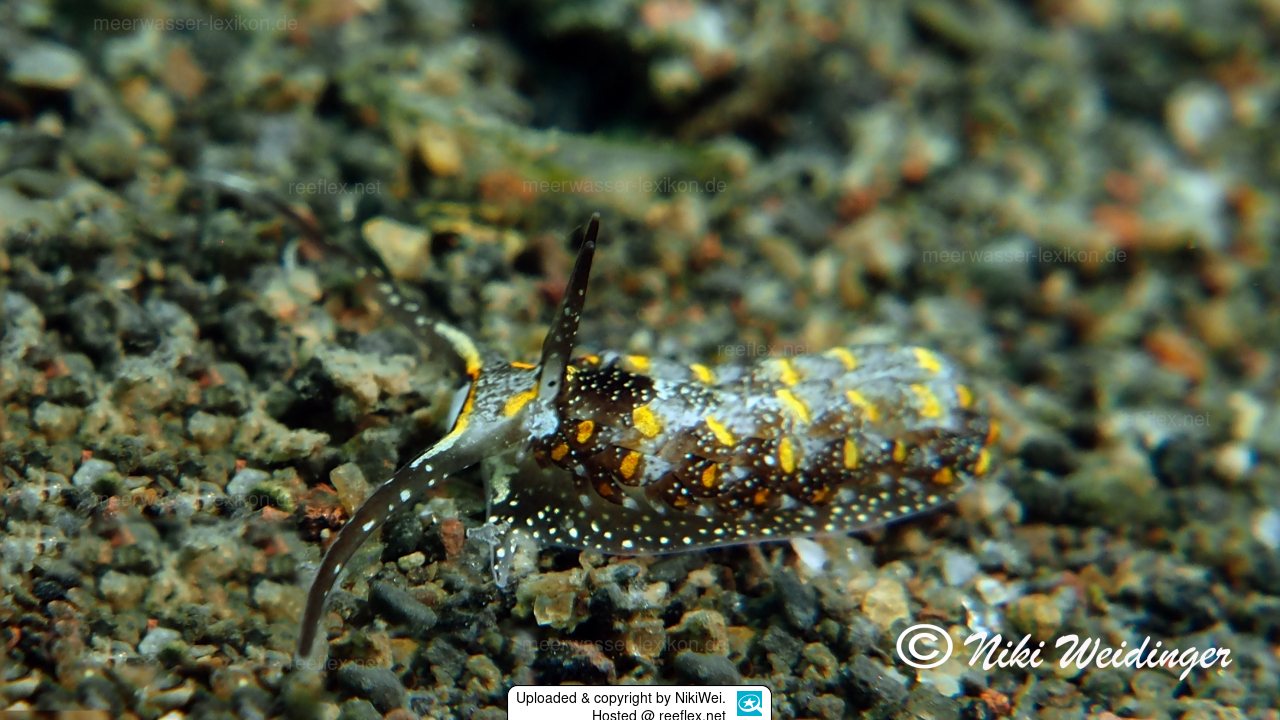Info
Cerberilla albopunctata Baba, 1976
Species Genus Cerberilla are seldom seen, because they live buried in the sandy bottom.Cerberilla nudibranch have a broad foot,very long and numerous cerata across the body.
Cerberilla albopunctata has a dark brown body and foot with large opaque white spots.White spots differ in sizes and scattered over the body, foot, cerata, oral tentacles and rhinophores.Rhinophores are translucent brown,smooth and small.The long oral tentacles are bright yellow, blue, dark brown and white bands.
This species probably feed on sand-dwelling sea anemones.
Species Genus Cerberilla are seldom seen, because they live buried in the sandy bottom.Cerberilla nudibranch have a broad foot,very long and numerous cerata across the body.
Cerberilla albopunctata has a dark brown body and foot with large opaque white spots.White spots differ in sizes and scattered over the body, foot, cerata, oral tentacles and rhinophores.Rhinophores are translucent brown,smooth and small.The long oral tentacles are bright yellow, blue, dark brown and white bands.
This species probably feed on sand-dwelling sea anemones.







 NikiWei
NikiWei









